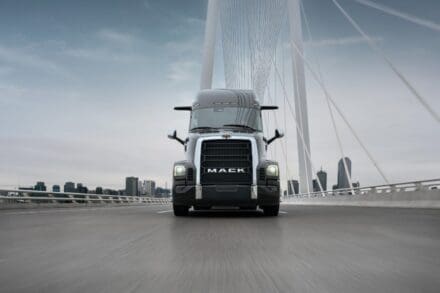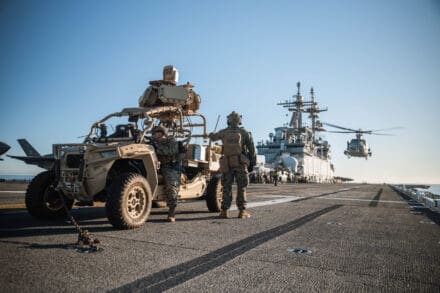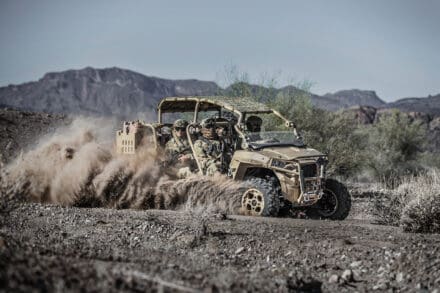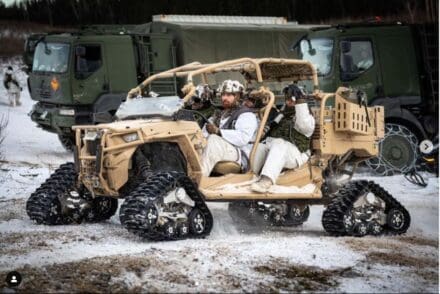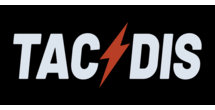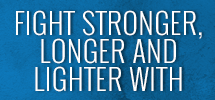
The DSEI exhibition will take place in London from 9 to 12 September 2025. As a key partner to His Majesty’s Armed Forces, Rheinmetall will be present in the UK capital. Under the motto ‘’Freedom Needs Enablers’’, the technology group will present its latest innovations and provide updates on its products and activities. The main focus will be on digitalisation and autonomy, as well as mobility and firepower.
The following events are planned during the exhibition at the Rheinmetall stand S9-110:
Tuesday, 9 September 2025 (Day 1 of DSEI):
11:00 a.m.: World premiere of a new multi-platform combat vehicle system for countering a wide range of land and air threats – presented in cooperation with Lockheed Martin
1:00 p.m.: Collaboration with Mercedes Benz on light tactical off-road vehicles based on the G-Class
2:00 p.m.: Launch of MASS nova, the latest generation of the proven maritime decoy system
Thursday, 11 September 2025 (Day 3 of DSEI):
around 2:35 p.m.: The Secretary of State for Defence, John Healey, and Rheinmetall CEO Armin Papperger will jointly launch the virtual groundbreaking ceremony of the UK Gun Hall in Telford. A dynamic audio-visual experience (a fly-through of the future facility with 3D renderings, an project timeline and transition to a fully operational Gun Hall) will demonstrate how the site will look once production is underway.
The following products will also be presented for the first time:
Lynx KF41 Skyranger 35, a highly mobile, modular and scalable ground-based air defence system, increasingly important for NATO’s collective defence.
CT-025: A crewless, remotely controlled turret designed for transport and armoured personnel carriers, equipped with a 25 mm KBA machine cannon
Mission Master CXT with Skyranger 762: An unmanned ground vehicle (UGV) in a light anti-aircraft configuration featuring the Skyranger 762 weapon station
SEOSS 400: Next-generation stabilised sensor system for heavy combat vehicles
We will also be providing information on the following topics at DSEI 2025:
Weapons and ammunition expertise:
Rheinmetall is one of the largest ammunition manufacturers in the Western world, with the UK playing a significant role. The construction of the UK Gun Hall in Telford marks a major step towards re-establishing large-calibre barrel manufacturing in Britain for the first time in decades. At its stand, Rheinmetall will present its full portfolio: from infantry weapons to medium-calibre ammunition, 120 mm and 130 mm smoothbore technology, 155 mm artillery ammunition, and rocket artillery.
Squad Support Weapon SSW40: The world’s first automatic, magazine-fed, shoulder-fired grenade launcher for 40 mm ammunition, with handling characteristics similar to an assault rifle
Digitalisation and networking:
Rheinmetall Battlesuite: A secure, interoperable military ecosystem of the future, connecting all domains and dimensions within a unified digital infrastructure
Gladius soldier system: Variants of the Gladius 2.0, also forming the basis of the German Armed Forces’ Future Soldier – Expanded System (IdZ-ES)
Autonomy and unmanned systems:
Path-A-Kit: Central to Rheinmetall’s autonomy strategy, winner of the ELROB 2024 competition in the Automated Convoy category. Rheinmetall will also establish a UK Advanced Land Autonomy Centre of Excellence. The Path-A-Kit is integrated into both the Mission Master CXT and the Ermine vehicle range.
Unmanned systems: A range of drones will be on display, including the Multi Mission Pod and FV-104 loitering munition, with demonstrations of their integration into the digital combat network.
Combat vehicles and tactical mobility:
Boxer MIV: The first British-built Boxer has rolled off the production line in Telford. Integration trials with the Javelin missile system have been successfully completed. A command post variant will be displayed in the DSEI Land Zone [N2-350], alongside a reconnaissance/heavy infantry weapon carrier version at the Rheinmetall stand.
Challenger 3: Initial mobility trials of the upgraded British main battle tank have been conducted. The Challenger 3 will also feature on the Static Display in the VIP area of the MOD Lounge.
Caracal: Developed in partnership with Mercedes-Benz and ACS Armoured Car Systems, the Caracal family offers a versatile, compact 4×4 platform for light forces, including airborne and special operations units.
Ermine tactical vehicle family: A next-generation mobility solution combining tactical transport with an integrated mobile energy source (microgrid) and designed for autonomous operation. Configurations include a UGV, side-by-side buggy, and quad. At DSEI 2025, a 4×4 quad bike and a 6×6 buggy variant will be displayed.
HX vehicle family: Renowned for outstanding mobility, versatility and optional high-level protection, this family supports a wide range of missions. A heavy HX 10×10 recovery vehicle will be on display.
We look forward to seeing you at our stand S9-110.
